According to research by the health sector, mother-to-child transmission of HIV is one of the three main ways of transmitting HIV/AIDS, with the risk of HIV transmission reaching 40%. However, if the mother is diagnosed early and treated effectively, this rate will be less than 2%, or even 0%. Therefore, over the years, the Ha Nam health sector has implemented a program to prevent mother-to-child transmission of HIV to help HIV-infected mothers give birth to healthy children. At the same time, it contributes to improving the quality of life of HIV-infected women and reducing the rate of HIV infection in the community.
According to statistics from the Ha Nam Center for Disease Control (CDC Ha Nam), on average, there are about 5 pregnant women with HIV each year in the province. All pregnant women with HIV and children born to HIV-infected mothers are counseled, referred, monitored, managed, and treated with antiretroviral drugs (ARVs) in the program to prevent mother-to-child transmission of HIV. In 2022, 9 pregnant women with HIV received ARV treatment, of which 7 were treated before pregnancy, 1 started treatment during pregnancy, and 1 was treated during labor. HIV antibody testing for children born to HIV-infected mothers after 18 months was 100% negative.
In the first 6 months of 2023, the province tested 3,395 pregnant women for HIV, discovering 1 new pregnant woman infected with HIV; providing preventive treatment for mother-to-child transmission of HIV to 2 pregnant women infected with HIV; 2 live births from HIV-infected mothers and 100% of the children received ARV preventive treatment; both children born to HIV-infected mothers were tested for PCR within 2 months of age. Due to proper and complete compliance with the ARV treatment process, all children born developed normally and were not infected.
Master, Doctor Nguyen Huu Tuan, Department of HIV/AIDS Prevention and Control (CDC Ha Nam) said: To reduce the risk of HIV transmission from mother to child, early HIV testing and early ARV treatment are decisive factors. For healthy children, not infected with HIV, all women who do not know their HIV status should be tested before pregnancy, or in the first 3 months of pregnancy to receive ARV treatment as soon as possible if HIV positive. For women who are infected with HIV, it is also necessary to carefully consider the time of pregnancy, that is when their HIV load is low, preferably below the detection threshold to minimize the risk of HIV transmission to the child.
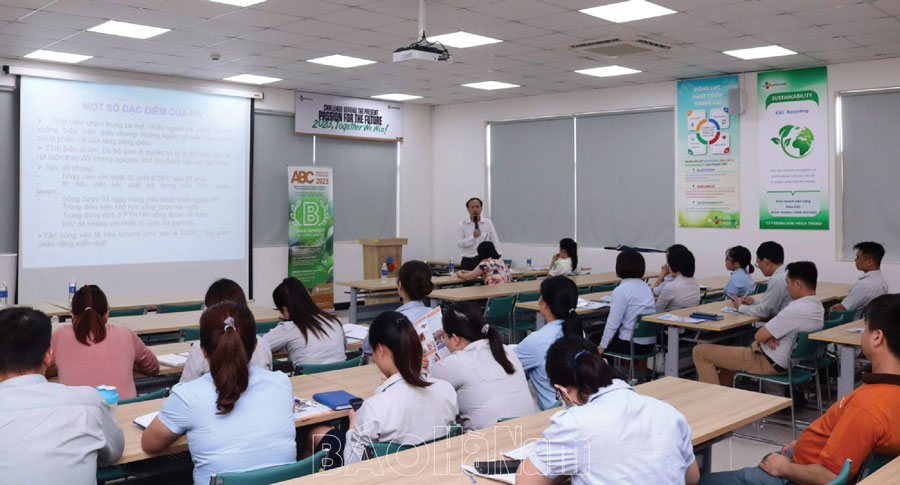
The rate of people infected with HIV in the province receiving treatment is over 92%. This is very significant, because early treatment will help improve the health of patients. At the same time, it prevents the replication of HIV virus in the body, reduces the possibility of infection in the community, and reduces the rate of HIV transmission from mother to child.
However, to give birth to children who are not infected with HIV, HIV-infected mothers must receive ARV treatment and adhere to treatment well; need to monitor pregnancy, comply with infection prevention measures and provide preventive treatment for children from birth. Although the interventions in the mother-to-child transmission prevention program are quite effective, if they want to give birth, HIV-infected people need to consult a doctor to be provided with full information and knowledge for a healthy pregnancy, and need to be fully monitored and treated. At the same time, pregnancy examination and management at HIV/AIDS care and treatment facilities.
In order to effectively implement the work of preventing HIV transmission from mother to child, in recent times, CDC Ha Nam, medical centers of districts, towns, cities, health stations of communes, wards and towns have thoroughly integrated into the reproductive health care system to reach pregnant women as soon as possible to overcome the situation of late HIV testing and late ARV treatment to prevent HIV transmission from mother to child in pregnant women infected with HIV. In particular, effectively implementing the Peak Month of Prevention of HIV Transmission from Mother to Child (from June 1-30) every year to contribute to changing people's awareness of HIV, reducing stigma and discrimination against people infected with HIV/AIDS. In addition, raising awareness of early prevention of HIV infection for women, especially women of childbearing age.
Implementing the Peak Month for Prevention of Mother-to-Child HIV Transmission in 2023, activities to prevent mother-to-child HIV transmission are promoted throughout the province, focusing on early detection and ARV treatment for pregnant women with HIV and their children. Strengthening mobile communication on main roads and public places, hanging banners, distributing leaflets, directly propagating prevention of mother-to-child HIV transmission for women of childbearing age; propagating on mass media, social networks... In particular, focusing on propaganda on: Benefits of early HIV testing for pregnant women; time when HIV-infected women can safely get pregnant to reduce the risk of HIV transmission to their children; benefits of early prevention of HIV infection; early ARV treatment to prevent mother-to-child HIV transmission; Promote HIV testing and counseling services for pregnant women and treatment to prevent mother-to-child transmission of HIV locally... Provide ARV drugs to ensure availability and accessibility for treatment to prevent mother-to-child transmission of HIV. PCR test to diagnose early HIV infection in children born to HIV-infected mothers in accordance with regulations of the Ministry of Health .
From the funding for HIV/AIDS prevention and control activities, pregnant women are tested for HIV and provided with ARV drugs to prevent mother-to-child HIV transmission for free during pregnancy management and labor at medical facilities in the province. Pregnant women infected with HIV are treated with ARV at CDC Ha Nam and medical centers in districts and towns. Early detection and proper and adequate treatment have significantly reduced the rate of children infected with HIV from their mothers; reducing the economic burden on families as well as the health sector in treatment and prevention activities.
To achieve the goal of “Eliminating mother-to-child transmission of HIV by 2030”, in addition to the efforts of the health sector, the participation and cooperation of all classes of people is needed. In particular, people of childbearing age and pregnant women need to proactively get tested for HIV and go to medical facilities immediately for appropriate and timely advice and intervention; HIV-infected women of childbearing age need to go to specialized medical facilities for advice and guidance on necessary tests to have healthy children.
Hoang Hai
Source link






![[Photo] President Luong Cuong receives delegation of the Youth Committee of the Liberal Democratic Party of Japan](https://vphoto.vietnam.vn/thumb/1200x675/vietnam/resource/IMAGE/2025/8/22/2632d7f5cf4f4a8e90ce5f5e1989194a)

![[Photo] Prime Minister Pham Minh Chinh chairs the conference to review the 2024-2025 school year and deploy tasks for the 2025-2026 school year.](https://vphoto.vietnam.vn/thumb/1200x675/vietnam/resource/IMAGE/2025/8/22/2ca5ed79ce6a46a1ac7706a42cefafae)





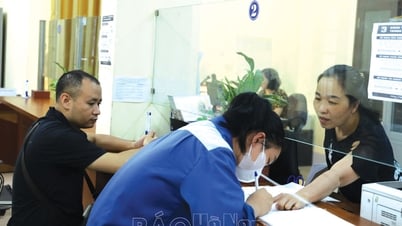





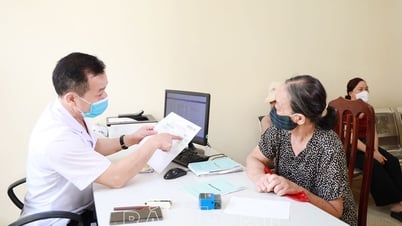















































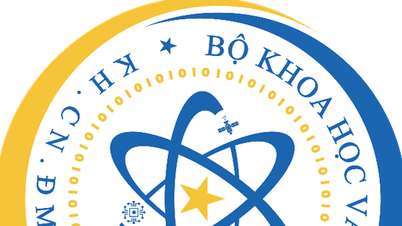



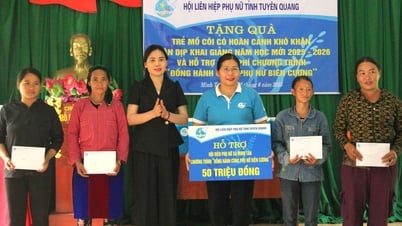






















Comment (0)